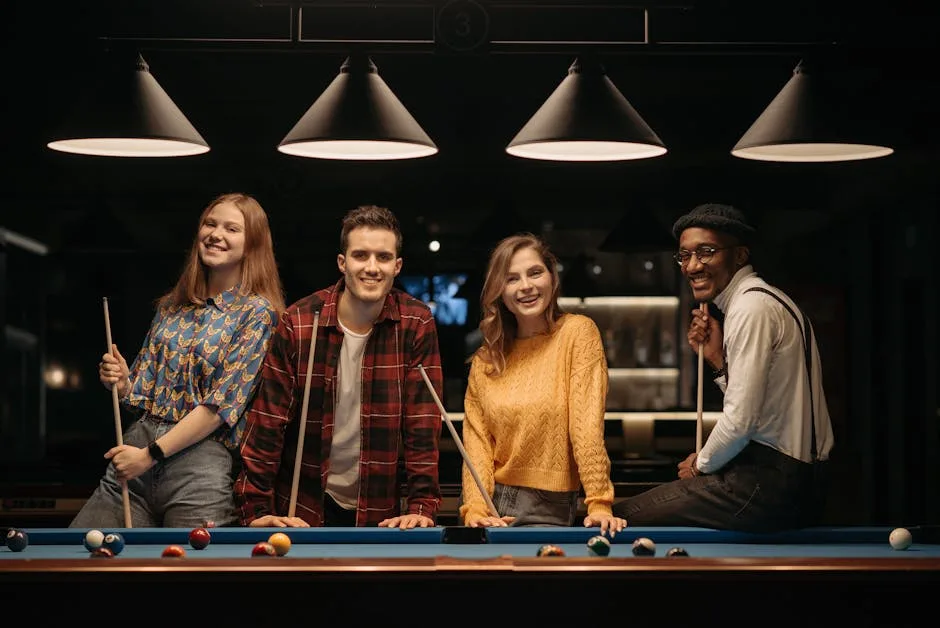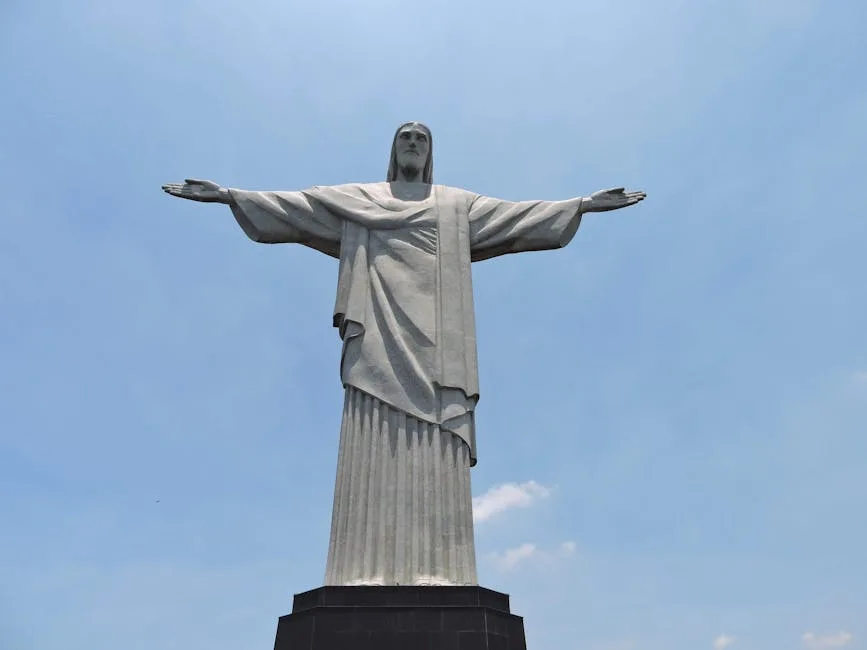When you think of global sports, soccer (or football, depending on where you are!) often comes to mind first, and for good reason. It’s a beautiful game played and loved by billions across every continent. But step a little further, beyond the packed stadiums of the world’s most popular sport, and you’ll discover a vibrant, diverse landscape of other activities that have captured hearts and minds, building passionate communities from local gyms to international arenas. We’re talking about the soaring leaps of volleyball, the thunderous dunks of basketball, and the intricate dance-fights and grappling philosophies of Brazilian martial arts.
These aren’t just niche hobbies; they are global phenomena, each with its unique story of growth, cultural impact, and an ever-expanding base of devoted practitioners and fans. They offer different kinds of thrills, demand distinct skill sets, and cultivate unique forms of camaraderie and personal growth. So, let’s lace up our virtual sneakers and delve into what makes these incredible activities so compelling.
Volleyball: The Dynamic Dance Above the Net
From sun-drenched beaches to bustling indoor courts, volleyball has carved out a massive following around the world. It’s a sport that combines incredible athleticism, precise teamwork, and strategic thinking, making every rally a high-stakes, exhilarating exchange. Unlike soccer, where players cover vast distances, volleyball is about explosive power, agility, and the split-second decisions made within a much smaller, vertical playing field.
Its accessibility is one of its greatest strengths. All you really need is a ball, a net, and a few friends, and you can play almost anywhere. This low barrier to entry has allowed it to flourish in schools, parks, and recreational leagues across countless countries. But don’t let its casual appeal fool you; professional volleyball, especially at the Olympic level, is a spectacle of power spikes, gravity-defying blocks, and acrobatic digs that demand years of dedicated training.
Beach volleyball, in particular, has seen a meteoric rise in popularity, captivating audiences with its fast pace, two-player teams, and iconic scenic backdrops. It brings a unique blend of athleticism and lifestyle, embodying a spirit of fun and competition under the open sky. Indoor volleyball, on the other hand, often showcases larger teams, more specialized positions, and incredibly complex plays, making it a chess match played at lightning speed. The constant communication, the synchronized movements, and the collective effort to keep the ball from hitting the floor create an unbreakable bond among teammates. Whether you’re a casual player or an aspiring Olympian, volleyball offers a fantastic full-body workout, sharpens reflexes, and fosters incredible team spirit. It’s a testament to how a simple concept – keeping a ball airborne over a net – can evolve into a global passion.
Basketball: Slam Dunks and Streetball Dreams
Basketball has transcended its American origins to become a truly global game, captivating millions with its fast pace, incredible athleticism, and the magnetic personalities of its star players. What started in a Springfield, Massachusetts YMCA in 1891 is now a dominant cultural force, from the courts of Manila to the streets of Paris, from professional leagues to pick-up games in every neighborhood imaginable. The rhythmic bounce of the ball, the swish of the net, and the roar of the crowd are sounds familiar to nearly everyone.
The NBA, in particular, has played a pivotal role in exporting basketball’s appeal worldwide. Superstars like Michael Jordan, LeBron James, and now an increasing number of international players have become household names, inspiring generations of athletes to pick up a ball. This global reach has created a dynamic two-way street, with talent from every corner of the globe now dominating the league, further fueling its international popularity. Basketball’s appeal lies in its constant motion and dramatic shifts in momentum. One moment, a team might be down; the next, a flurry of three-pointers and explosive dunks can turn the tide entirely. This makes it incredibly exciting to watch and play.
Beyond the professional spectacle, basketball’s accessibility is another key factor in its widespread embrace. A hoop and a ball are often all you need, making it a staple in urban environments where space is at a premium. Streetball culture, with its emphasis on individual flair, creative moves, and community pride, thrives in cities worldwide. It’s a game that encourages both individual brilliance and collective effort, where an incredible assist can be just as thrilling as a game-winning shot. Basketball provides an intense cardiovascular workout, improves coordination, and teaches invaluable lessons about strategy, perseverance, and teamwork. It’s more than just a game; it’s a culture, a lifestyle, and a universal language spoken with bounces, passes, and high-flying dunks.
Brazilian Martial Arts: The Dance, The Grapple, The Philosophy
Brazil, while famous for its soccer prowess, has also gifted the world two incredibly rich and dynamic martial arts: Capoeira and Brazilian Jiu-Jitsu (BJJ). These practices are far more than just fighting techniques; they are deep cultural expressions, demanding immense physical discipline, mental fortitude, and a profound understanding of movement and strategy. They offer a compelling alternative to traditional competitive sports, focusing not just on victory, but on personal evolution and cultural connection.
Capoeira: The Rhythmic Art of Resistance
Capoeira is a truly unique art form that blends elements of martial arts, acrobatics, music, and dance. Born from the struggle of enslaved Africans in Brazil, it evolved as a disguised form of combat training, hidden within celebratory movements. When you witness a roda (Capoeira circle), you see two players engaging in a fluid, non-contact game of attack and defense, often accompanied by live music and singing. It’s a mesmerizing display of agility, strength, and rhythm, with practitioners performing powerful kicks, acrobatic flips, and intricate dodges.
Learning Capoeira isn’t just about physical moves; it’s about understanding its history, music, and philosophy. It builds incredible core strength, flexibility, balance, and coordination, all while fostering a sense of community and cultural pride. It’s a full-body workout for both the muscles and the mind, a living testament to resilience and creativity. This art form has spread globally, with academies and rodas flourishing in cities across Europe, North America, Asia, and beyond, drawing people seeking a unique blend of fitness, self-defense, and cultural immersion.
Brazilian Jiu-Jitsu: The Gentle Art of Leverage
Brazilian Jiu-Jitsu (BJJ) has exploded in popularity worldwide, largely due to its proven effectiveness in real-world self-defense and mixed martial arts (MMA) competitions. Developed from Judo by the Gracie family in Brazil, BJJ focuses on grappling and ground fighting, emphasizing leverage and technique over brute strength. The core philosophy is that a smaller, weaker person can successfully defend against a larger, stronger assailant by using proper technique and applying joint-locks and chokeholds.
Training in BJJ involves rigorous drilling, sparring (known as ‘rolling’), and a deep dive into an intricate system of submissions, escapes, and positional control. It’s often called ‘human chess’ because of the strategic depth and mental engagement required. Beyond the physical benefits of improved strength, endurance, and flexibility, BJJ cultivates incredible mental discipline, problem-solving skills, and resilience. It teaches humility, patience, and the importance of continuous learning. Its global reach is immense, with BJJ academies on virtually every continent, attracting practitioners from all walks of life seeking effective self-defense, fitness, and a challenging mental puzzle. Many find a profound sense of community and personal growth within their ‘dojo’ or ‘academy,’ a testament to the art’s transformative power.
Beyond the Hype: What Makes These Activities So Compelling?
So, what ties these diverse activities – volleyball, basketball, Capoeira, and BJJ – together in their global ascent beyond soccer’s omnipresence? It’s a combination of factors that resonate deeply with individuals and communities across different cultures.
Firstly, **accessibility** plays a huge role. While professional levels demand specialized equipment and venues, the basic entry point for many of these is relatively low. A ball and a patch of ground for basketball or volleyball, or minimal gear for martial arts, can get you started. This grassroots appeal allows them to flourish organically.
Secondly, they offer **diverse physical and mental challenges**. Unlike sports that might focus on one primary movement, these activities engage the entire body and mind. Volleyball demands explosive jumps and quick reflexes; basketball requires agility, endurance, and strategic thinking; Capoeira builds strength, flexibility, and rhythm; and BJJ sharpens problem-solving, patience, and resilience. This holistic engagement makes them incredibly rewarding for personal development.
Thirdly, the **community aspect** is incredibly strong. Whether it’s the tight-knit team dynamics of a volleyball squad, the shared passion on a basketball court, or the profound bonds forged in a Capoeira roda or BJJ academy, these activities foster deep connections. They create spaces for people to belong, to challenge each other, and to grow together, transcending linguistic and cultural barriers. The sense of shared effort and mutual respect is palpable.
Finally, they offer powerful avenues for **self-expression and cultural identity**. Capoeira is inherently a cultural expression of Brazilian heritage. Basketball, especially streetball, allows for individual flair and creative movement within a team context. Volleyball, with its elegant spikes and digs, becomes a form of aerial ballet. Even BJJ, while strategic, allows for individual style in grappling. These activities are not just games; they are canvases upon which individuals paint their athletic and personal stories.
In a world increasingly looking for diverse ways to stay active, connect with others, and find personal meaning, these sports and martial arts provide compelling answers. They remind us that the world of physical activity is vast and rich, extending far beyond the most popular spectacle, offering something truly special for everyone willing to explore.




